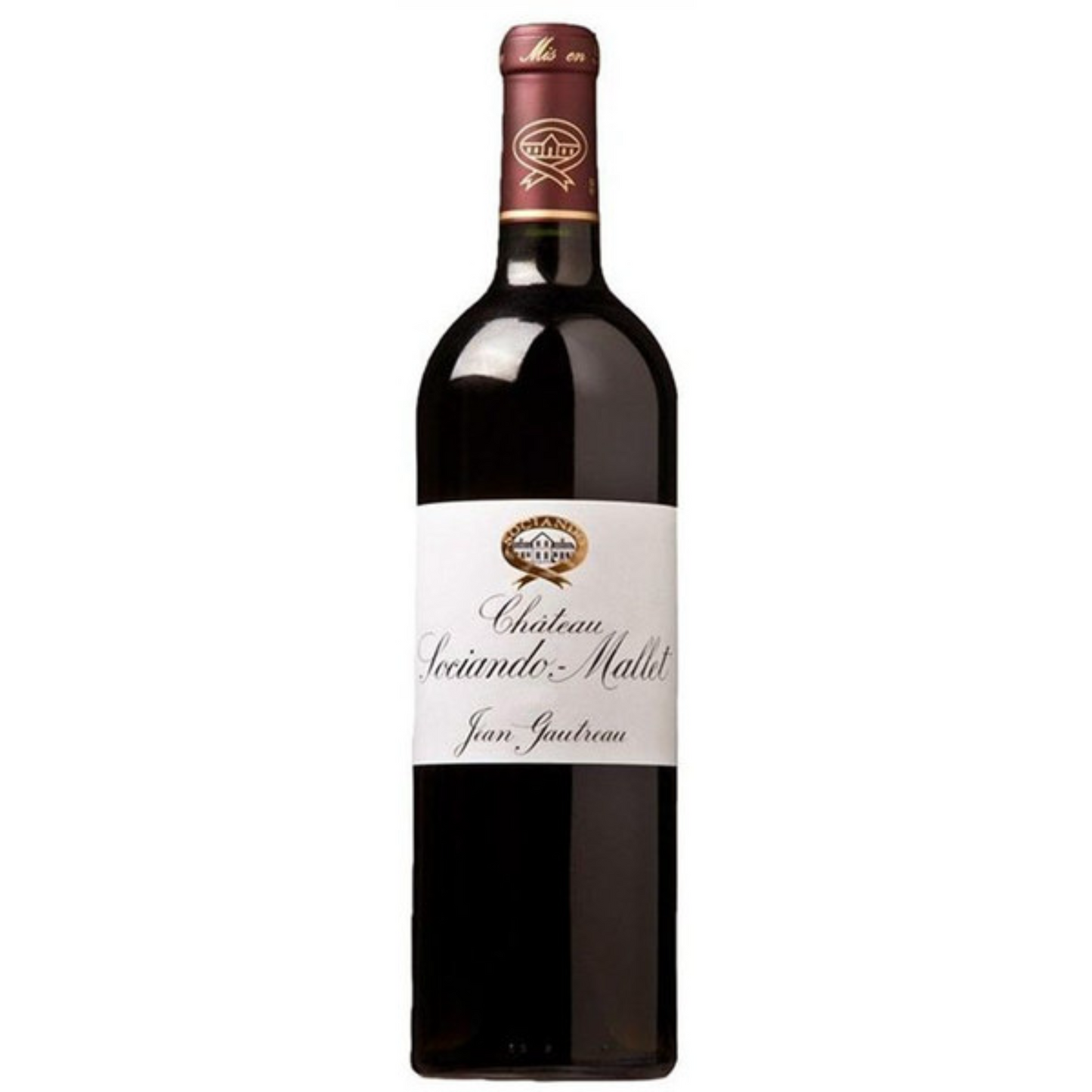Château Sociando-Mallet 2007
Château Sociando-Mallet 2007
Country: France
Region: Bordeaux
Volume: 750ml
Winery Background and History
Château Sociando-Mallet, located in the Haut-Médoc appellation of Bordeaux, France, has a history dating back to 1633. The estate was founded by a nobleman from the Basque region named Sossiondo, and over time, the name evolved to Sociando. In the 19th century, a naval captain named Mallet acquired the property, leading to its current name, Château Sociando-Mallet. In 1969, Jean Gautreau purchased the estate and undertook significant renovations, expanding the vineyard holdings and modernizing the winemaking facilities. Under his guidance, the estate gained recognition for producing high-quality wines that rival those of classified growths, despite its omission from the 1855 Bordeaux Classification.
Producer and Winemaker
As of the 2007 vintage, Château Sociando-Mallet was under the ownership of Jean Gautreau, who played a pivotal role in revitalizing the estate. The winemaking team focused on traditional Bordeaux practices, emphasizing meticulous vineyard management and precise vinification techniques to highlight the unique terroir of the Haut-Médoc.
Vineyards and Micro Climate
The estate’s vineyards span approximately 85 hectares, planted on gravelly soils with clay and limestone subsoils, typical of the Haut-Médoc region. The proximity to the Gironde estuary provides a moderating influence on the climate, reducing temperature extremes and promoting a long, even ripening period. The 2007 growing season was challenging, characterized by a cool and wet summer, which required diligent vineyard management to ensure optimal grape ripeness. The estate’s vineyards are planted with 55% Merlot, 40% Cabernet Sauvignon, and 5% Cabernet Franc.
Grape Varietals & Percentage Used
The 2007 Château Sociando-Mallet is a blend of approximately 55% Merlot, 40% Cabernet Sauvignon, and 5% Cabernet Franc.
Vinification & Aging Methods
The grapes were hand-harvested and underwent meticulous sorting to ensure only the highest quality fruit was utilized. Fermentation took place in temperature-controlled stainless steel vats, allowing for precise management of fermentation kinetics. Following fermentation, the wine was aged in French oak barrels, with a portion being new oak, for a period of approximately 12 months. This aging process imparted complexity and structure to the wine while preserving the purity of the fruit.
ABV (Alcohol by Volume)
The 2007 vintage has an alcohol content of approximately 13%.
Tasting Notes
The 2007 Château Sociando-Mallet presents a medium ruby color. On the nose, it offers aromas of red currants, cedar, tobacco leaf, and herbal notes. The palate is medium-bodied, with flavors of tart red fruits, green pepper, and earthy undertones. The tannins are firm, contributing to an austere and lean finish. This vintage reflects a classic, old-school Bordeaux style that may appeal to enthusiasts of more traditional expressions.
Food & Wine Pairing
This wine pairs well with roasted meats, particularly lamb and beef, as well as game dishes. Its balanced acidity and refined tannins complement the richness of these foods, enhancing the overall dining experience.
Service Methods and Temperatures
For optimal enjoyment, it is recommended to decant the wine for about 30 minutes prior to serving to allow it to fully express its aromas and flavors. Serve at a temperature between 16-18°C (60-64°F).
Storage and Aging Potential
Stored under proper conditions—away from light, at a consistent temperature of around 12°C (54°F), and with appropriate humidity—this wine has the potential to develop further complexity over the next several years. It is suitable for consumption now but can be cellared to enhance its tertiary characteristics.
Couldn't load pickup availability
12 in stock
View full details

